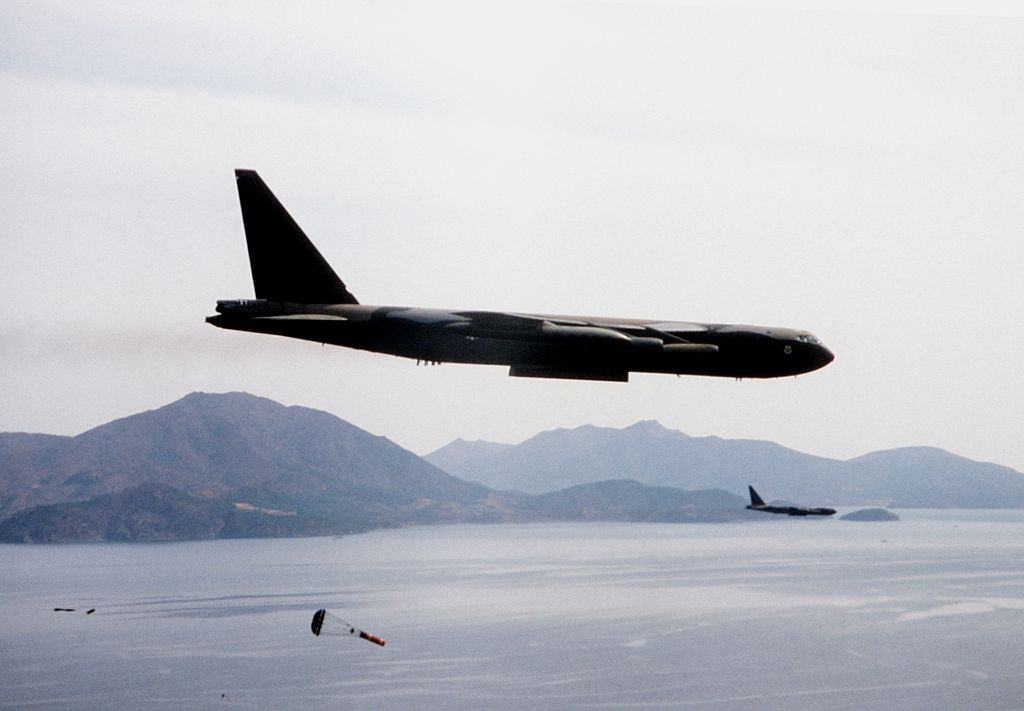
ADVERTISEMENT - CONTINUE READING BELOW
16. The B-52 became a critical component of deployment of naval mines
In May 1972, the US Navy used aircraft to mine the waters of Haiphong Harbor in North Vietnam, effectively closing the port to shipping for the next 300 days. President Nixon announced the operation to the American people. “All entrances to North Vietnamese ports will be mined to prevent access to these ports and North Vietnamese naval operations from these ports”. For the remainder of 1972, US Navy mine-laying operations closed the rest of the ports of North Vietnam. It was one of the more successful American operations of the entire Vietnam War. Eventually, over 8,000 mines were deployed by US Navy and Marine aircraft, effectively shutting down water commerce in North Vietnam. Although the United States was then involved with withdrawing from Vietnam, it nonetheless viewed the mining operation as a crucial negotiating tool with the intransigent North Vietnamese.
Beginning in the 1980s, with US Navy/Air Force joint maritime operations on the uptick, B-52s were modified to operate as airborne minelayers. The aging bomber offered the advantages of being able to deploy more mines, from a longer distance, than any aircraft in the Navy’s inventory. It also provided the ability to mine enemy waters without requiring a close approach by a carrier group, thus placing the ships of the group in harm’s way. The B-52, originally designed to deliver gravity bombs carrying nuclear warheads, had by the 1980s evolved into a strike weapon for use against enemy shipping using both anti-ship missiles and naval mines. It still retained its role as an alert weapon of America’s nuclear triad, as events in Europe led to the collapse of the Soviet system and the end of the Cold War.

